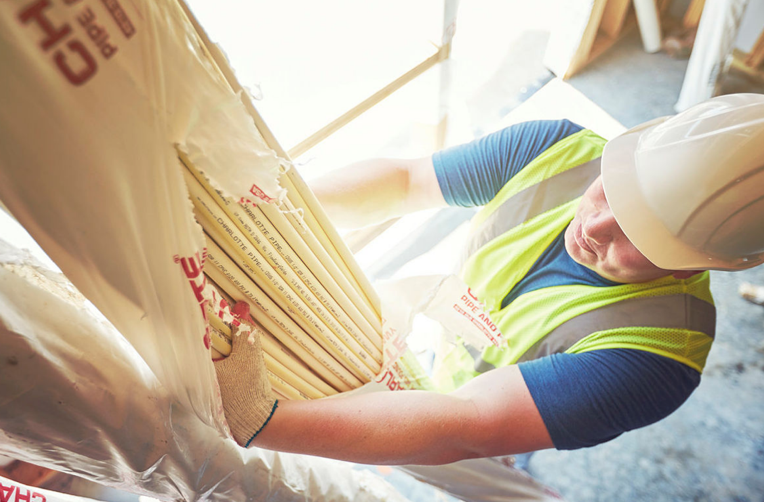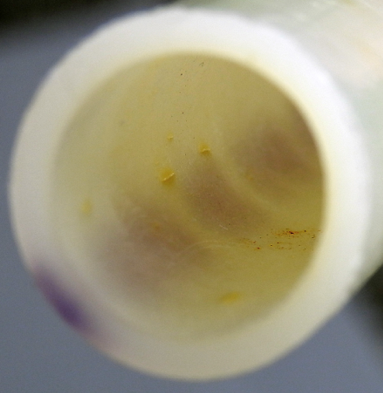
By: Jonathan Simon on May 6th, 2019
CPVC Can Handle the Pressure: A Comparison of CPVC vs. PEX
Domestic water plumbing systems are one of the highest liability systems in a home or building. Water damage from a failed plumbing can result in significant claims and in a domestic plumbing system, not only are you routing water throughout a building – those water pipes are held under constant pressure.
Water pressure can wreak havoc in a plumbing system in two ways:
- Excessive pressure resulting in a burst pipe
- Special pressure limitations to reduce the risk of corrosion or degradation
While burst pressure is the most frequently considered pressure concern, degradation related pressure limits are increasingly becoming a factor in building using PEX plumbing systems.
Burst Pressures: Safety Factor Considerations
The plumbing codes require that all domestic water plumbing systems be pressure rated at 100psi at 180°F, this means that the system must be capable of handling at least 100psi of pressure at 180°F without ballooning or bursting. The codes, however, do not specify a minimum pressure rating at lower temperatures.
At room temperature, FlowGuard Gold® CPVC is pressure rated to 400psi and at all normal operating temperatures (up to 140°F) FlowGuard Gold CPVC is pressure rated above 200psi. That means you will never have to worry about an over-pressure situation in a FlowGuard Gold potable water system.
Unfortunately, PEX plumbing systems are pressure rated at as much as 60% lower than a FlowGuard Gold plumbing system. With a maximum pressure rating of 160psi, it is entirely possible for system pressures in a multifamily or commercial building to exceed the rated pressure for a PEX system.
Chlorine Related Pressure Limitations
FlowGuard Gold Plumbing Systems can handle the pressure regardless of local water conditions, however with a PEX plumbing system the presence of chlorine can significantly reduce the pressure capacity of the pipe.
Per the chlorine resistance test standard ASTM F2023 and Plastics Pipe Institute Technical Note-53, in chlorinated water PEX is not intended for use at pressures over 80psi. This limitation is not because the pipe will burst above 80psi, but because the pipe becomes significantly more vulnerable to the influence of chlorine degradation at higher pressures.
When a PEX plumbing system handling chlorinated water operates at pressures above 80psi, there a significant increase in the risk of chlorine-induced degradation, pin-hole PEX leaks and failures.

Chlorine degradation on PEX piping taken from a home in Washington
How Pressure Limits Can Be Exceeded
Water pressure in a building is typically under 80psi, but the pressure limitation on PEX can easily be exceeded under many circumstances.
- Elevated street pressures – street pressures of 80-130psi are fairly common, especially in municipal water systems with significant elevation changes or booster pumps. While these pressures may not be seen during the day, when many homes are drawing off a system, but overnight when system demand drops pressures can spike
- Mid-rise and high-rise construction – In taller buildings, plumbing systems can be designed with either gravity fed pressure, relying on water stored at or near the top of the building, or on booster pumps to ensure adequate system pressure at the higher floors. Both of these system designs run the risk of pressures in excess of 80psi.
- Failed, unbalanced or non-existent expansion tanks – As water gets hot, it expands, as the water expands in a piping system it has nowhere to go, so the pressure in the pipes will increase. To address this, in many new homes, expansion tanks are added. These expansion tanks are mechanical in nature and typically rely on a balanced air pressure diaphragm to absorb the pressure spikes. If the air pressure is not properly balanced to the system water pressure, the tank can fail to absorb the pressure. If the tank fails, becomes unbalanced, or was never installed, the pressure spikes associated with hot water can easily exceed 80psi.
- Failed or non-existent pressure regulating valves (PRVs) – In structures where high water pressure may be anticipated, builders often specify the inclusion of pressure regulating valves (also known as pressure reducing valves or PRVs for short). Similar to an expansion tank, a PRV is a mechanical component that typically features a spring-loaded diaphragm which restricts the water flow to reduce the pressure on the outlet side of the valve. Over time, the mechanical components in a PRV often seize up or fail, leaving the PRV inoperable. When this happens, pressure in the system can easily exceed the 80psi limit in a PEX system.
FlowGuard Gold CPVC Can Handle the Pressure
Water pressure can have a significant impact on plumbing system performance. Whether you’re looking for an extra safety factor in a larger building or in a residential building where pressures may exceed 80psi – a FlowGuard Gold CPVC plumbing system can handle the pressures that PEX systems simply cannot.
While mechanical systems like expansion tanks and PRVs can be added to reduce the risk, mechanical pressure regulating systems are prone to failure and should not be relied on to prevent a piping system from exceeding its pressure limitations.
With a pressure rating of 400psi at room temperature and at least 200psi up to 140°F you can trust FlowGuard Gold CPVC to provide peace of mind that your plumbing pipes can stand up to the pressure found in your projects. If you’re still using a PEX plumbing system, it's time to make the switch. To speak to a representative about how FlowGuard Gold can help you build better homes, contact us now.


